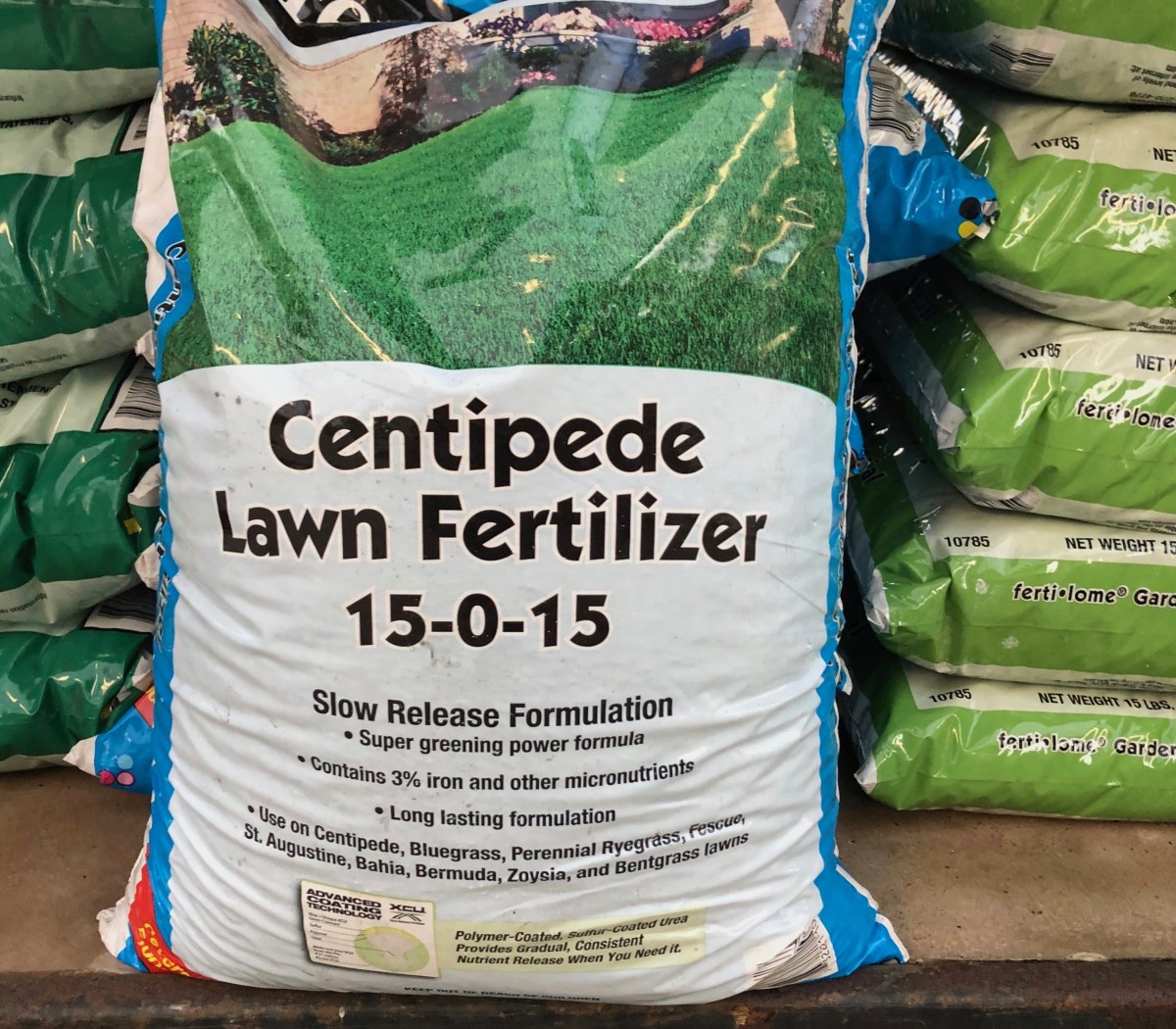

Articles
What Do The Numbers On A Fertilizer Bag Mean
Modified: May 6, 2024
Learn about the meaning behind the numbers on a fertilizer bag in this informative article. Understand the importance of choosing the right fertilizer for your plants.
(Many of the links in this article redirect to a specific reviewed product. Your purchase of these products through affiliate links helps to generate commission for Storables.com, at no extra cost. Learn more)
Introduction:
The numbers on a fertilizer bag may look like a random assortment of digits at first glance, but they hold valuable information about the composition and effectiveness of the product. Understanding these numbers is essential for any gardener or agricultural enthusiast looking to optimize their plant growth and yield. In this article, we will delve into the meaning behind the numbers on a fertilizer bag and explore how to interpret and utilize this information.
Fertilizers are essential for providing plants with the necessary nutrients to thrive. However, not all fertilizers are created equal, and different plants have varying nutrient requirements. The numbers found on a fertilizer bag represent the nutrient content in the formula, allowing gardeners to select the right product for their specific needs.
These numbers are often displayed as a sequence separated by hyphens, such as 10-20-10 or 5-10-5. This sequence represents the nutrient ratio of the three primary elements needed for plant growth: nitrogen (N), phosphorus (P), and potassium (K). Known as the N-P-K ratio, these numbers provide crucial information on the fertilizer’s composition.
Understanding and using the N-P-K ratio correctly is vital because nutrients play a pivotal role in various aspects of plant development, including root growth, flowering, fruit production, and overall plant health. By comprehending the numbers on a fertilizer bag, gardeners can tailor their fertilization approach to meet the specific needs of their plants.
In the next sections of this article, we will explore each of the three primary elements in the N-P-K ratio, deciphering their significance and understanding how they contribute to plant growth. Additionally, we will discuss micronutrients, analyze fertilizer bag labels, and provide practical tips to help readers make informed decisions when purchasing and using fertilizers.
Key Takeaways:
- Understanding the N-P-K ratio on fertilizer bags is crucial for selecting the right product to meet your plants’ specific needs. Nitrogen, phosphorus, and potassium play distinct roles in supporting plant growth and development.
- Reading and understanding fertilizer bag labels empowers gardeners to make informed decisions, ensuring that plants receive the appropriate nutrients at the right time. Following recommended application rates and addressing micronutrient deficiencies are key to maintaining plant health and productivity.
Read more: What Do The Numbers On Fertilizer Mean
The Meaning of Fertilizer Bag Numbers:
When you pick up a bag of fertilizer, the numbers displayed on the packaging represent the nutrient content of the product. These numbers are often referred to as the N-P-K ratio, which stands for nitrogen (N), phosphorus (P), and potassium (K).
The N-P-K ratio provides valuable information about the proportions of these three key nutrients in the fertilizer. For example, a bag labeled 10-10-10 indicates that the product contains equal parts nitrogen, phosphorus, and potassium. Understanding this ratio is crucial as it helps determine which plants benefit most from the fertilizer.
The order in which these numbers appear on the bag reflects the nutrients’ sequence: nitrogen, phosphorus, and potassium. Each nutrient plays a unique role in supporting plant growth and development:
- Nitrogen (N): Nitrogen is a vital nutrient for plant growth as it is responsible for leaf and stem development. It promotes vigorous foliage growth and enhances the plant’s overall green color. Nitrogen is crucial for photosynthesis, the process by which plants convert sunlight into chemical energy. It plays a significant role in stimulating plant production and promoting healthy, lush growth.
- Phosphorus (P): Phosphorus is important for root development, flower formation, and fruit production. It aids in the transfer of energy within the plant, enabling efficient nutrient uptake and utilization. Phosphorus also contributes to strong root systems, ensuring plants have a solid foundation for growth. It is particularly beneficial for stimulating early root development and improving overall plant vigor.
- Potassium (K): Potassium is involved in numerous plant processes, including increasing disease resistance, regulating water movement within the plant, and improving overall stress tolerance. It enhances the plant’s ability to withstand harsh environmental conditions such as drought, extreme temperatures, and disease pressure. Potassium also aids in the production of sugars and starches, contributing to healthy plant metabolism and energy storage.
By understanding the specific roles of nitrogen, phosphorus, and potassium, gardeners can select the appropriate fertilizer to meet their plants’ needs. Different plant species have varying nutrient requirements, and tailoring the fertilizer application accordingly can lead to optimal growth and yield.
Now that we have explored the meaning behind the fertilizer bag numbers, the next sections will provide a more in-depth understanding of each nutrient’s significance and how to interpret their content when purchasing fertilizers.
Understanding the N-P-K Ratio:
The N-P-K ratio, also known as the nutrient ratio, is a crucial factor to consider when choosing a fertilizer for your plants. This ratio represents the proportions of nitrogen (N), phosphorus (P), and potassium (K) in the fertilizer formula.
The N-P-K ratio helps you determine the nutrients’ concentration in the fertilizer and allows you to select the right product based on your plants’ specific needs. The ratio is always expressed in the same order: nitrogen, phosphorus, and potassium.
For example, a fertilizer with an N-P-K ratio of 10-5-5 means it contains 10% nitrogen, 5% phosphorus, and 5% potassium. Understanding this ratio is essential because each nutrient contributes differently to plant growth and development.
Nitrogen (N) is responsible for promoting leaf and stem growth. It is vital for the green color of plants, as it is a key component of chlorophyll, the pigment responsible for photosynthesis. A balanced N-P-K ratio ensures that plants receive an adequate supply of nitrogen to support their overall growth and vigor.
Phosphorus (P) is essential for root development, flower formation, and fruit production. It plays a crucial role in energy transfer within plants, enabling efficient nutrient uptake and utilization. A high phosphorus content is beneficial for plants that require strong root systems, improved flowering, or increased fruit production.
Potassium (K) contributes to overall plant health and resilience. It helps regulate water movement within the plant and improves stress tolerance. Potassium is also involved in the production of sugars and starches, which provide energy for plant metabolism and growth. A higher potassium content is beneficial for enhancing disease resistance, drought tolerance, and overall plant vigor.
It is important to note that the N-P-K ratio represents the relative proportions of these nutrients and not their absolute quantities. The actual nutrient content will depend on the weight or volume of the fertilizer being used.
Gardeners should consider their plants’ specific nutrient requirements when selecting a fertilizer. Some plants, such as leafy greens or lawns, benefit from higher nitrogen levels, which promote lush foliage growth. Other plants, like flowering perennials or fruit-bearing trees, may require higher phosphorus and potassium levels to support flower and fruit development.
By understanding the N-P-K ratio and its significance, gardeners can make informed decisions when purchasing fertilizers. Taking into account the specific needs of their plants, they can select a fertilizer with the appropriate nutrient ratio to ensure optimal growth, health, and productivity.
In the next sections, we will dive deeper into each nutrient’s content, exploring how to decipher the nitrogen, phosphorus, and potassium values on fertilizer bags and how they impact plant growth.
Deciphering the Nitrogen Content:
Nitrogen is a fundamental nutrient for plant growth, and its presence in fertilizer is indicated by the first number in the N-P-K ratio. Understanding the nitrogen content on a fertilizer bag is essential for determining its suitability for your plants’ needs.
The nitrogen content is expressed as a percentage on the bag, such as 10% or 20%. This percentage represents the amount of actual nitrogen present in the fertilizer. For instance, a bag labeled 10-10-10 contains 10% nitrogen.
Higher nitrogen content in a fertilizer promotes lush foliage growth, making it suitable for plants that primarily require green, leafy growth, like lawns and leafy vegetables. Nitrogen plays a critical role in stimulating chlorophyll production, which is essential for photosynthesis, the process by which plants convert sunlight into energy.
When deciphering the nitrogen content, it is important to consider both the amount and the form of nitrogen present in the fertilizer. The form of nitrogen indicates how readily available it is for plant uptake.
There are various forms of nitrogen used in fertilizers, including ammonium (NH4+), nitrate (NO3-), and urea (CO(NH2)2). These forms differ in their solubility and how they interact with soil and plant roots.
Ammonium nitrogen is less soluble and slowly released over time, making it suitable for plants with low nitrogen requirements or those sensitive to excessive nitrogen levels. Nitrate nitrogen, on the other hand, is highly soluble and readily available for plant uptake. It is ideal for plants that have a high demand for nitrogen, as it provides quick and efficient nutrient absorption.
Urea, a common form of nitrogen, is an organic compound that slowly breaks down in the soil, gradually releasing nitrogen. This slow-release nitrogen is beneficial for sustained plant growth and can help prevent nitrogen leaching into groundwater.
Understanding the form of nitrogen in the fertilizer is important for determining its appropriate application rate and timing. Fast-release fertilizers with high levels of nitrate nitrogen generally provide rapid greening effects but may require more frequent applications. Slow-release fertilizers, on the other hand, provide a steady supply of nitrogen over an extended period, reducing the risk of over-fertilization and minimizing nutrient leaching.
When utilizing a fertilizer with high nitrogen content, it is crucial to follow the recommended application rates to avoid nitrogen imbalance or excessive growth. Overuse of nitrogen can lead to weak stems, increased susceptibility to diseases, and environmental issues due to nutrient runoff.
By deciphering the nitrogen content on a fertilizer bag and understanding its form, gardeners can select the appropriate fertilizer for their specific plants and growth objectives. Careful consideration of the nitrogen needs will ensure healthy foliage growth and optimal plant performance.
In the following sections, we will take a closer look at phosphorus and potassium contents, exploring their roles in plant development and how to interpret their values on fertilizer bags.
Interpreting the Phosphorus Content:
Phosphorus is a vital nutrient for plant growth, and its presence in fertilizer is represented by the second number in the N-P-K ratio. Understanding the phosphorus content on a fertilizer bag is essential for determining its suitability for promoting root development, flower formation, and fruit production.
The phosphorus content is expressed as a percentage on the bag, such as 5% or 10%. This percentage indicates the amount of actual phosphorus present in the fertilizer. For example, a bag labeled 10-5-10 contains 5% phosphorus.
Phosphorus plays a key role in energy transfer within plants, facilitating nutrient uptake and utilization. It is crucial for root development, ensuring strong and healthy root systems. Adequate phosphorus levels promote vigorous root growth, enabling plants to efficiently absorb water and nutrients from the soil.
Additionally, phosphorus is essential for flower and fruit development. It promotes the formation of buds, flowers, and seeds, contributing to increased blooming and improved fruit set. High phosphorus content in a fertilizer is beneficial for plants that require strong root systems, improved flowering, or increased yield.
When interpreting the phosphorus content, it is important to consider both the amount and the form of phosphorus present in the fertilizer. The most common form of phosphorus used in fertilizers is phosphate (PO43-).
Phosphate can be found in various forms, including water-soluble phosphate, which is readily available for plant uptake, and insoluble forms that require microbial activity in the soil to convert them into plant-available forms over time.
The availability of phosphorus in the soil is also influenced by pH levels. Phosphorus tends to be less available in alkaline soils and more available in acidic soils. If the soil pH is not within the optimal range for phosphorus uptake, additional soil amendments or treatments may be necessary to enhance phosphorus availability.
Understanding the form and availability of phosphorus in the fertilizer is crucial for determining the appropriate application rate and timing. Some fertilizer formulations may include slow-release or controlled-release phosphorus, providing a gradual and continuous supply of this nutrient over time.
It is important to note that excessive phosphorus application can lead to nutrient imbalance and environmental issues. Over-fertilization with phosphorus can negatively impact waterways and ecosystems through nutrient runoff and pollution. It is essential to follow recommended application rates and consider soil test results when determining phosphorus fertilizer needs.
By interpreting the phosphorus content on a fertilizer bag and understanding its form and availability, gardeners can select the appropriate fertilizer to support root development, flower formation, and fruit production. Proper phosphorus management will contribute to robust plant growth, abundant blooms, and bountiful harvests.
In the following sections, we will dive deeper into the potassium content, exploring its role in plant development and how to interpret its value on fertilizer bags.
The three numbers on a fertilizer bag represent the percentage of nitrogen, phosphorus, and potassium in the fertilizer. For example, a 10-10-10 fertilizer contains 10% of each nutrient.
Read more: What Do The Numbers Mean In Ryobi Drill
Analyzing the Potassium Content:
Potassium is a vital nutrient for plants, and its presence in fertilizer is indicated by the third number in the N-P-K ratio. Understanding the potassium content on a fertilizer bag is essential for determining its suitability for promoting overall plant health, stress tolerance, and efficient nutrient utilization.
The potassium content is expressed as a percentage on the bag, such as 10% or 15%. This percentage represents the amount of actual potassium present in the fertilizer. For example, a bag labeled 10-5-10 contains 10% potassium.
Potassium, also known as potash, plays a crucial role in various plant functions. It regulates water movement within the plant, enhances stress tolerance, and improves disease resistance. Additionally, potassium is involved in the production of sugars and starches, providing energy for essential metabolic processes and promoting overall plant vigor.
An adequate supply of potassium ensures that plants have the ability to efficiently uptake and transport nutrients throughout their tissues. It also plays a role in increasing the efficiency of photosynthesis, enhancing fruit quality, and improving shelf life.
Fertilizers with higher potassium content are often beneficial for plants that require increased stress tolerance, such as those subjected to drought, extreme temperatures, or disease pressure. Additionally, potassium is particularly crucial for plants that produce flowers, vegetables, and fruits.
When analyzing the potassium content, it is important to note that potassium fertilizers come in different forms. Common potassium fertilizers include potassium chloride, potassium sulfate, and potassium nitrate. These different forms may have varying solubilities and chemical characteristics, affecting their availability for plant uptake.
Potassium chloride, for example, is a highly soluble form of potassium and is commonly used in agriculture. It is readily available to plants and is suitable for application through various methods, such as broadcasting or fertigation (fertilization through irrigation systems).
Potassium sulfate, on the other hand, contains both potassium and sulfur. It is often preferred for crops that have a high sulfur requirement, as it provides a dual nutrient benefit.
Understanding the form of potassium in the fertilizer is crucial for determining its compatibility with specific plant needs and for selecting the appropriate fertilizer for optimal results.
It is important to note that excessive potassium application can cause nutrient imbalances and interfere with the uptake of other essential nutrients. Therefore, it is crucial to consider the specific requirements of the plants and follow recommended application rates to avoid over-fertilization.
By analyzing the potassium content on a fertilizer bag and understanding its form and availability, gardeners can select the appropriate fertilizer to promote overall plant health, stress tolerance, and nutrient utilization. Effective potassium management will result in strong, healthy plants that are better equipped to endure environmental challenges and produce quality yields.
In the next section, we will explore the importance of micronutrients in fertilizers and their role in supporting optimal plant growth and development.
Additional Nutrients and Elements:
In addition to the primary nutrients nitrogen (N), phosphorus (P), and potassium (K), fertilizers may contain other essential nutrients and elements that are vital for plant growth and development.
These additional nutrients, often referred to as secondary nutrients and micronutrients, play crucial roles in various plant functions and contribute to overall plant health.
Secondary nutrients include calcium (Ca), magnesium (Mg), and sulfur (S). Although plants require these nutrients in smaller quantities compared to the primary nutrients, they are still essential for robust growth and optimal plant functioning.
Calcium is important for strong cell walls, proper root development, and disease resistance. It also influences nutrient uptake and utilization within the plant.
Magnesium is a critical component of chlorophyll, the pigment responsible for photosynthesis. It is essential for the synthesis of sugars and plays a role in activating enzymes that facilitate plant growth and metabolism.
Sulfur is involved in protein production, enzyme activation, and the formation of vitamins and other essential compounds within the plant. It supports overall plant health and vitality.
Micronutrients, also known as trace elements, are required by plants in smaller quantities but are equally critical for their growth and development. These micronutrients include iron (Fe), manganese (Mn), zinc (Zn), copper (Cu), boron (B), molybdenum (Mo), and nickel (Ni).
Iron is essential for chlorophyll synthesis and energy transfer within the plant. It is crucial for leaf development and overall plant vigor.
Manganese is involved in various metabolic processes, including photosynthesis and nitrogen assimilation. It contributes to antioxidant activity, helping plants cope with environmental stress.
Zinc is important for enzyme activity and plays a role in hormone regulation and protein synthesis. It is necessary for proper growth and development, particularly in the early stages of plant growth.
Copper is involved in several enzyme functions and is vital for reproductive organ development, cell wall formation, and disease resistance.
Boron is necessary for pollen germination, flower formation, and fruit development. It also aids in carbohydrate transport within the plant.
Molybdenum is involved in nitrogen fixation and the conversion of inorganic phosphorus into a usable form within the plant. It is crucial for overall nitrogen metabolism.
Nickel is required for proper functioning of enzymes involved in nitrogen and urea metabolism. It contributes to plant growth and overall nutrient utilization.
While these secondary nutrients and micronutrients are required in smaller quantities, their deficiency or imbalance can still have significant impacts on plant growth and health. Therefore, it is important to ensure that plants receive an adequate supply of these nutrients through proper fertilization.
Fertilizers labeled as complete or balanced fertilizers generally contain a combination of the primary nutrients, secondary nutrients, and micronutrients. These formulations help provide a comprehensive nutrient profile to support optimal plant growth and development.
When selecting a fertilizer, it is advisable to consider the specific nutrient requirements of the plants you are cultivating. Conducting a soil analysis can provide valuable insights into nutrient deficiencies or imbalances, helping you make informed decisions regarding the appropriate fertilizer formulation and application rates.
In the following section, we will discuss the importance of micronutrients in more detail and how they contribute to plant health and productivity.
Importance of Micronutrients:
Micronutrients are essential elements that plants require in small quantities for healthy growth and development. Although plants need these nutrients in lesser amounts compared to the primary nutrients, their role in maintaining overall plant health and productivity should not be underestimated.
Micronutrients, also known as trace elements, include iron (Fe), manganese (Mn), zinc (Zn), copper (Cu), boron (B), molybdenum (Mo), and nickel (Ni). Each of these elements plays a specific role in various plant functions and metabolic processes.
Iron (Fe): Iron is vital for the production of chlorophyll, the pigment responsible for photosynthesis. It helps plants convert sunlight into energy and plays a crucial role in maintaining healthy leaf coloration. Iron deficiency can lead to chlorosis, a condition characterized by yellowing leaves.
Manganese (Mn): Manganese is involved in essential plant functions, including photosynthesis and nitrogen assimilation. It activates enzymes and provides antioxidant protection, helping plants cope with environmental stress. Manganese deficiency can result in poor growth, reduced photosynthesis, and abnormal leaf formation.
Zinc (Zn): Zinc is crucial for enzyme activity and hormone regulation within the plant. It plays a vital role in various metabolic processes, including photosynthesis, protein synthesis, and carbohydrate metabolism. Zinc deficiency can lead to stunted growth, reduced yields, and leaf deformities.
Copper (Cu): Copper is necessary for several enzyme functions and is involved in the synthesis of lignin, a component of plant cell walls. It contributes to reproductive organ development, disease resistance, and overall plant vigor. Copper deficiency can cause leaf browning, wilting, and reduced plant growth.
Boron (B): Boron is essential for various processes related to cell division, flowering, and fruit development. It plays a key role in pollen germination, cell wall formation, and carbohydrate transport. Boron deficiency can lead to poor flower and fruit set, as well as distorted growth and reduced yield.
Molybdenum (Mo): Molybdenum is involved in nitrogen fixation and the conversion of inorganic phosphorus into a usable form within the plant. It is crucial for overall nitrogen metabolism. Molybdenum deficiency can result in yellowing or mottling of leaves and impaired nitrogen utilization.
Nickel (Ni): Nickel is required for the proper functioning of enzymes involved in nitrogen and urea metabolism. It contributes to plant growth, overall nutrient utilization, and disease resistance. Nickel deficiency can lead to reduced plant growth and increased susceptibility to diseases.
While micronutrients are required in small quantities, their deficiency or imbalance can have significant impacts on plant growth and health. Even a slight shortage of these elements can hinder plant metabolic processes and limit overall productivity.
It is important to note that micronutrient availability in the soil can be affected by several factors, including soil pH, organic matter content, and soil texture. Some micronutrients may become less available under certain pH conditions, leading to deficiencies. Therefore, it is crucial to conduct regular soil testing to assess nutrient levels and identify any potential micronutrient deficiencies.
Supplementing plants with micronutrients can be done through the use of fertilizer formulations that contain these elements or through foliar sprays. Foliar application, in which nutrients are sprayed directly onto the plant leaves, can be an effective way to address immediate nutrient deficiencies and ensure rapid uptake.
By recognizing the importance of micronutrients and addressing any deficiencies, gardeners can promote healthy plant growth, enhance productivity, and ensure the overall well-being of their plants.
In the next section, we will explore how to understand and interpret fertilizer bag labels, guiding gardeners in making informed decisions when purchasing and using fertilizers.
Understanding Fertilizer Bag Labels:
When perusing the fertilizer aisle, it is crucial to understand the information provided on the bag labels. Deciphering these labels will help you make informed decisions when selecting and using fertilizers for your plants. Here are some key elements to pay attention to:
Brand and Product Name: The brand and product name provide information about the specific fertilizer you are considering. This allows you to identify and compare different options available in the market.
N-P-K Ratio: The N-P-K ratio, represented by three numbers separated by hyphens, indicates the nutrient content of the fertilizer. This ratio represents the proportions of nitrogen (N), phosphorus (P), and potassium (K) in the product. For example, a fertilizer labeled 10-10-10 contains equal parts of nitrogen, phosphorus, and potassium.
Secondary Nutrients and Micronutrients: Some fertilizer bags may indicate the presence of secondary nutrients and micronutrients. These additional nutrients support specific plant functions and promote overall plant health. The percentages of these nutrients may also be provided.
Formulation: The formulation refers to the physical form of the fertilizer, such as granular, liquid, or soluble powder. Understanding the formulation will help you determine the appropriate application method for your plants.
Application Rate: The recommended application rate indicates the amount of fertilizer to apply per unit area or per plant. Following the specified application rate helps prevent over-fertilization, which can damage plants and harm the environment.
Application Timing: Some fertilizer labels may provide guidance on the timing of application, suggesting optimal periods for fertilizing specific plants or growth stages. Adhering to the recommended application timing ensures nutrients are provided when plants need them the most.
Special Instructions or Recommendations: Fertilizer labels may include additional instructions or recommendations for specific situations, such as adjusting pH levels before application, pre-planting or post-planting application, or restrictions for use on certain crops or turfgrass varieties. It is important to read and follow these instructions to achieve the best results.
Guaranteed Analysis: The guaranteed analysis section specifies the minimum percentage by weight of each nutrient in the fertilizer. This information allows you to assess the nutrient concentration and make comparisons between different fertilizer products.
Other Ingredients or Fillers: Some fertilizers may include other ingredients or fillers, such as limestone or inert materials, which assist with product distribution or serve as carriers for the active nutrients. Be aware of these additional components, as they may contribute to pH adjustments or other effects.
Expiration Date or Batch Number: Some fertilizer bags may include an expiration date or batch number, ensuring product freshness and quality control. Pay attention to these details to ensure you are using a reliable and effective fertilizer.
Reading and understanding fertilizer bag labels empowers gardeners to select the appropriate product for their plants’ specific needs and avoid potential pitfalls associated with improper fertilizer usage. Remember to always follow the label instructions for application rates, timing, and safety precautions.
In the next section, we will conclude our discussion and summarize the key takeaways from this article.
Conclusion:
Understanding the numbers on fertilizer bags is essential for any gardener or agricultural enthusiast. The N-P-K ratio, represented by three numbers, informs us about the nutrient composition of the fertilizer and helps us select the right product for our plants’ specific needs. Nitrogen (N), phosphorus (P), and potassium (K) are the primary nutrients necessary for plant growth, each playing a distinct role in supporting different aspects of plant development.
Deciphering the nitrogen content allows us to determine its role in promoting leaf and stem growth, while interpreting the phosphorus content helps us understand its contribution to root development, flower formation, and fruit production. Analyzing the potassium content reveals its importance for overall plant health, stress tolerance, and nutrient utilization.
In addition to the primary nutrients, secondary nutrients and micronutrients are also crucial for optimal plant performance. Secondary nutrients, including calcium (Ca), magnesium (Mg), and sulfur (S), support various plant functions, while micronutrients like iron (Fe), manganese (Mn), zinc (Zn), copper (Cu), boron (B), molybdenum (Mo), and nickel (Ni) play vital roles in specific metabolic processes within the plant.
By understanding fertilizer bag labels, we can make informed decisions. Looking for the N-P-K ratio, secondary nutrient and micronutrient information, formulation, application rates, timing recommendations, and special instructions empowers us to choose the right fertilizer and apply it correctly.
It is important to follow recommended application rates, keeping in mind that over-fertilization can have detrimental effects on plants and the environment. Additionally, addressing micronutrient deficiencies through the use of fertilizers containing these elements or through foliar sprays helps maintain plant health and productivity.
By combining this knowledge with proper soil testing, gardeners can ensure that their plants receive the appropriate nutrients at the right time, leading to healthy growth, vibrant blooms, bountiful harvests, and overall success in gardening endeavors.
As you embark on your journey of fertilizing your plants, make sure to consult the information on fertilizer bags, consider the specific needs of your plants, and embrace the role of each nutrient in supporting their growth. With this understanding, you can nurture your plants and create a thriving and beautiful garden.
Now that you've got the scoop on fertilizer numbers, why stop there? Spruce up your garden's privacy and appeal with creative barrier solutions. For those eager to ensure their garden thrives, mastering the art of fertilizer application is crucial. Both guides offer practical steps and creative ideas to elevate your gardening game.
Frequently Asked Questions about What Do The Numbers On A Fertilizer Bag Mean
Was this page helpful?
At Storables.com, we guarantee accurate and reliable information. Our content, validated by Expert Board Contributors, is crafted following stringent Editorial Policies. We're committed to providing you with well-researched, expert-backed insights for all your informational needs.




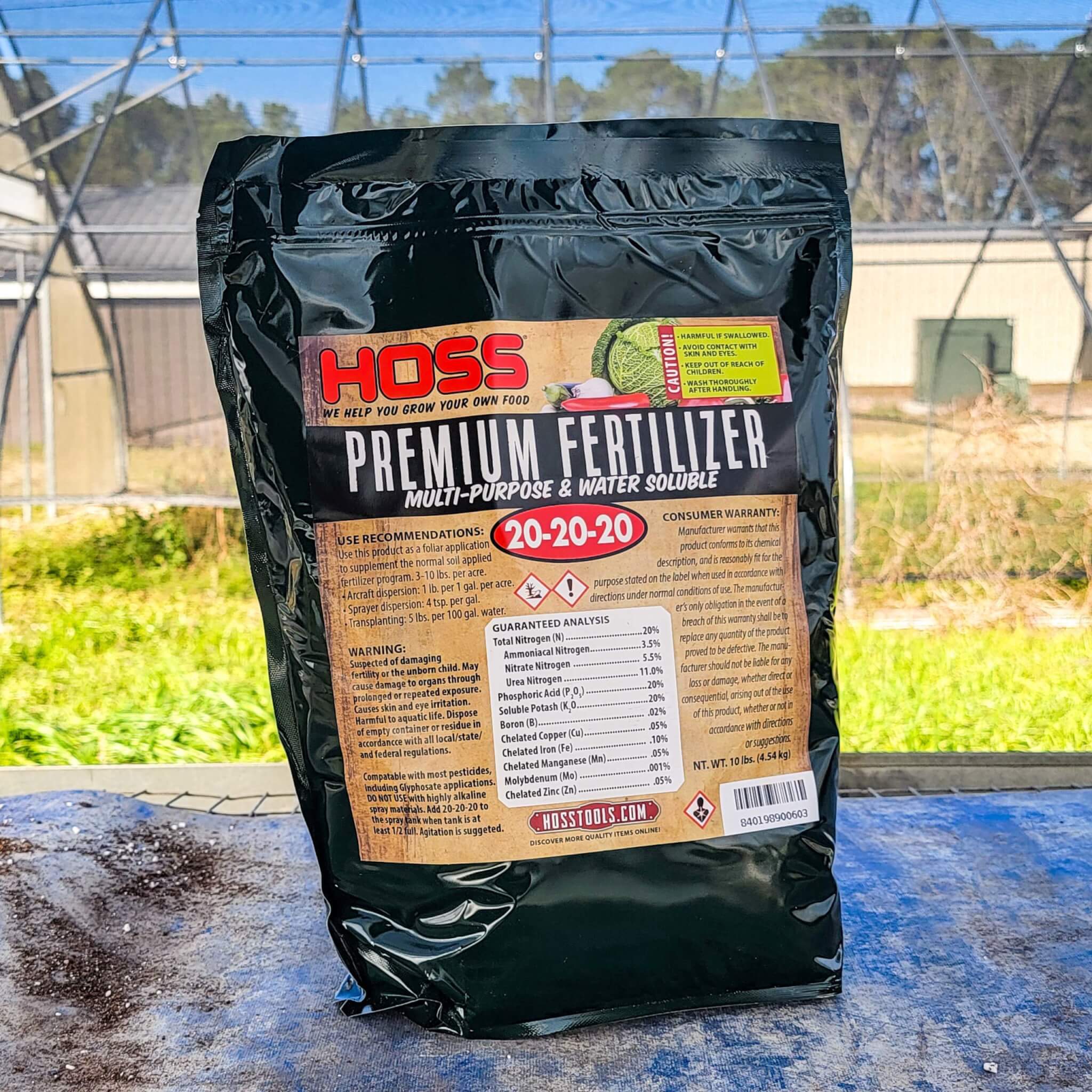

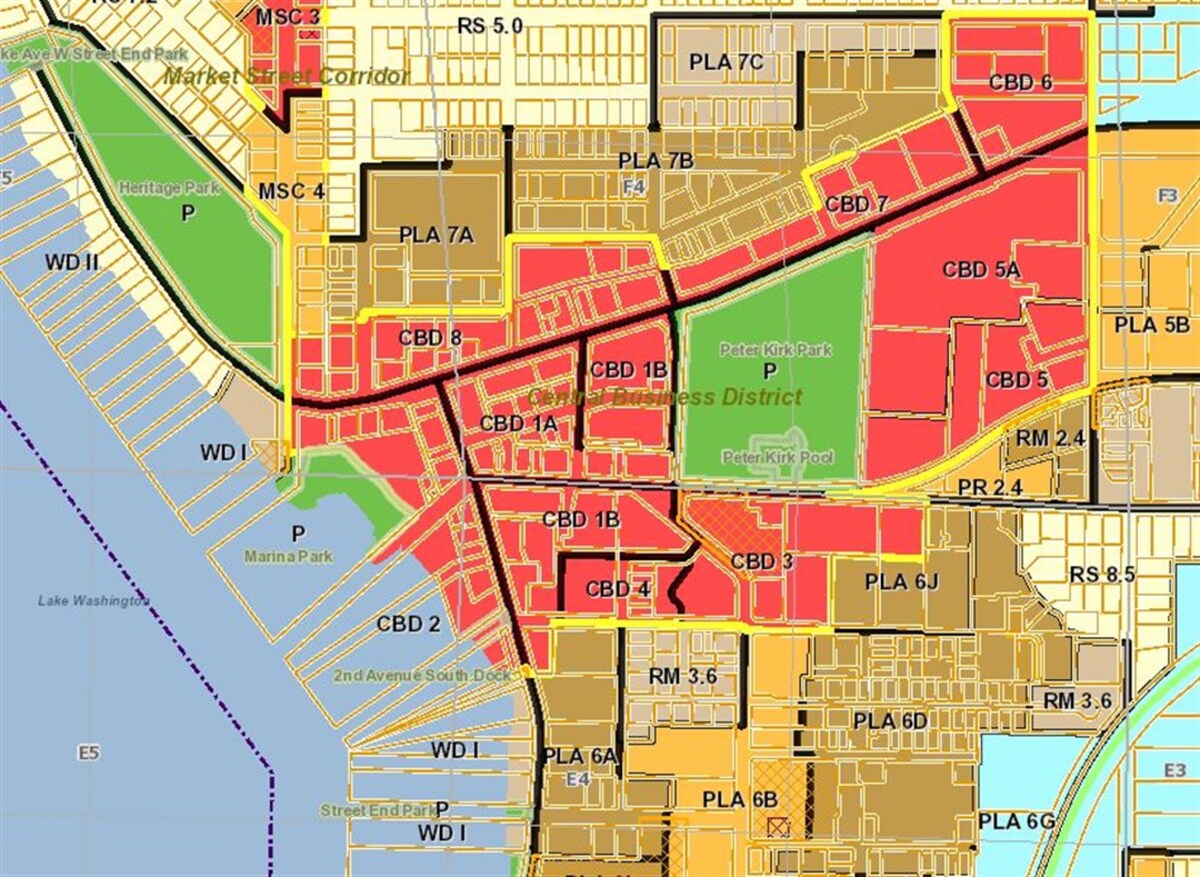



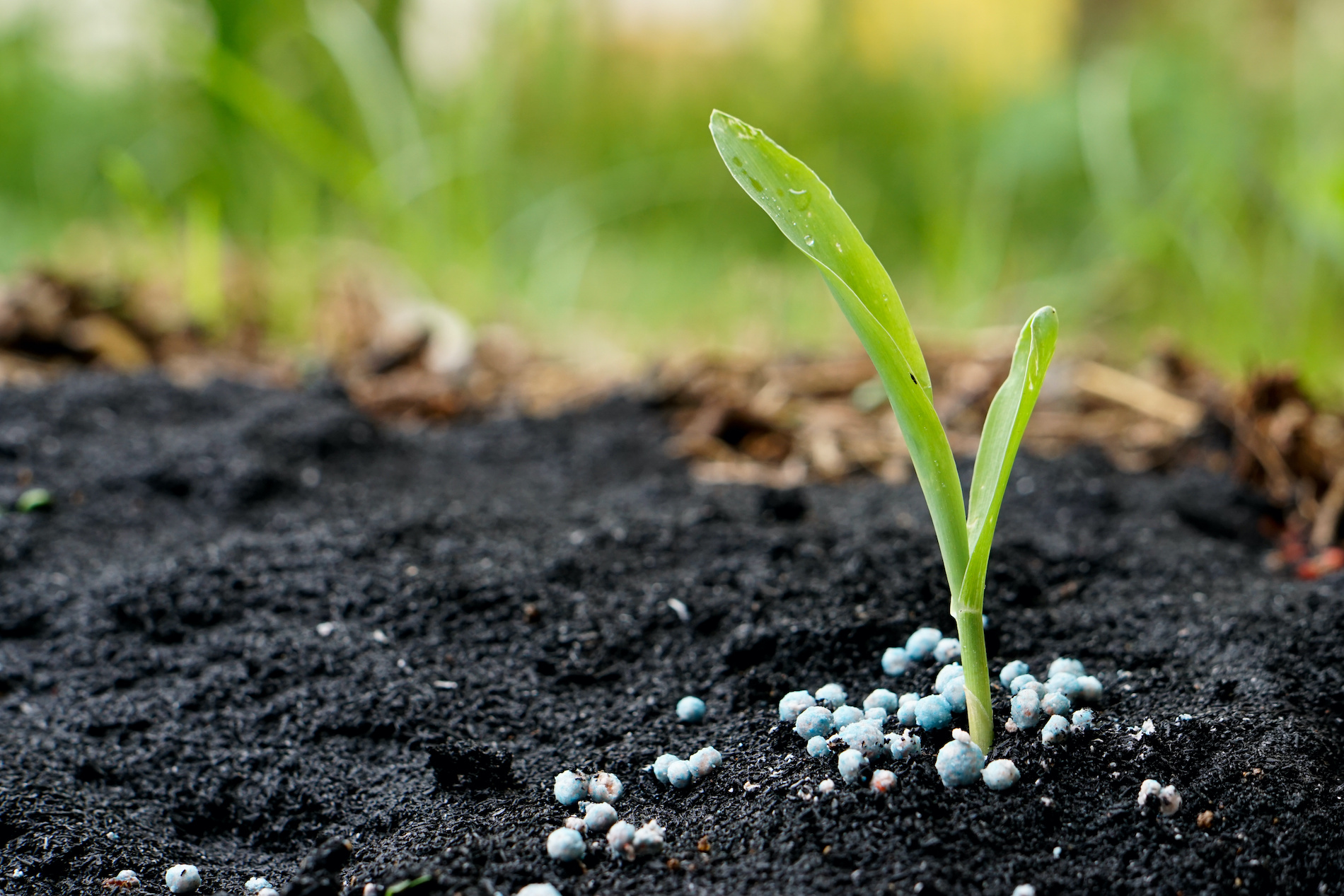

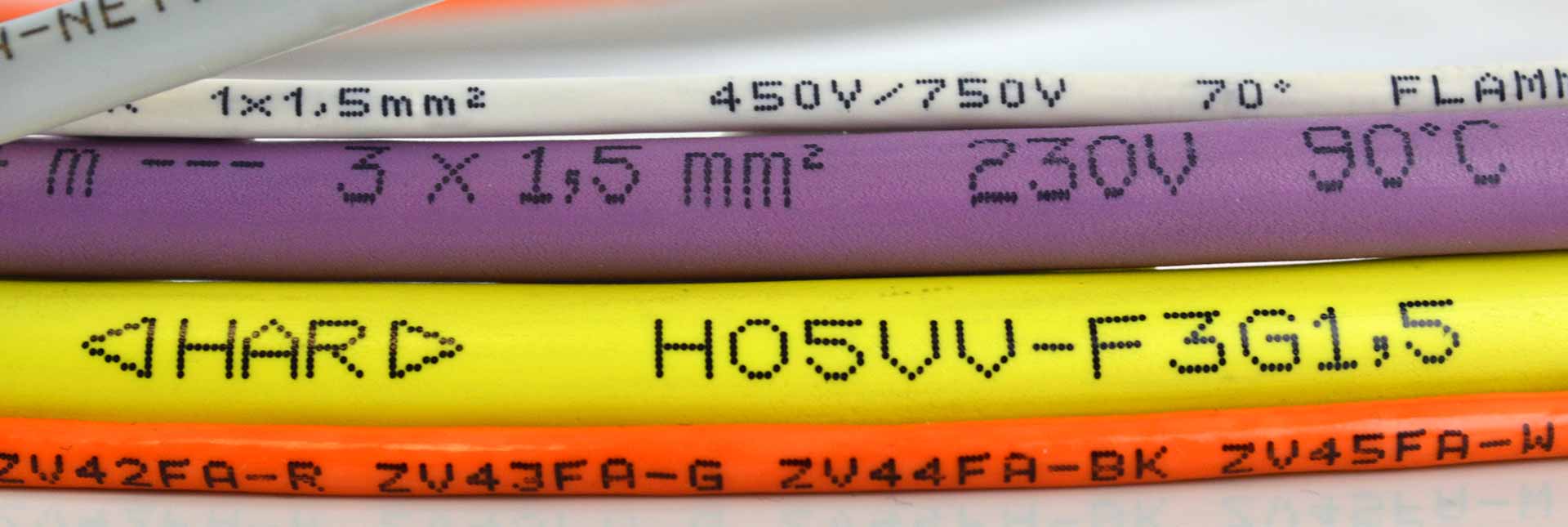

0 thoughts on “What Do The Numbers On A Fertilizer Bag Mean”